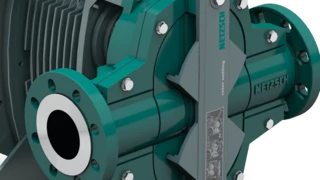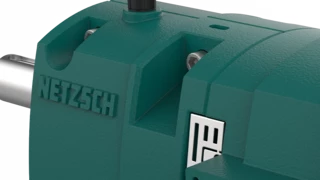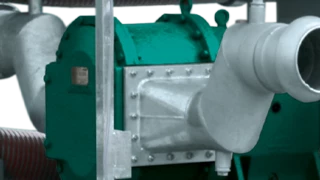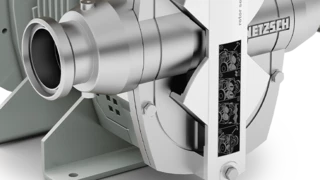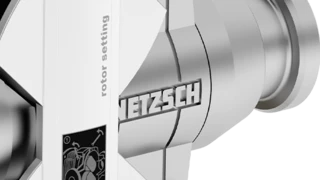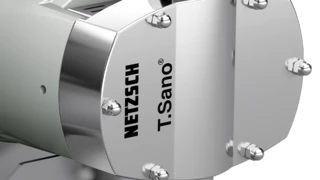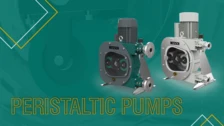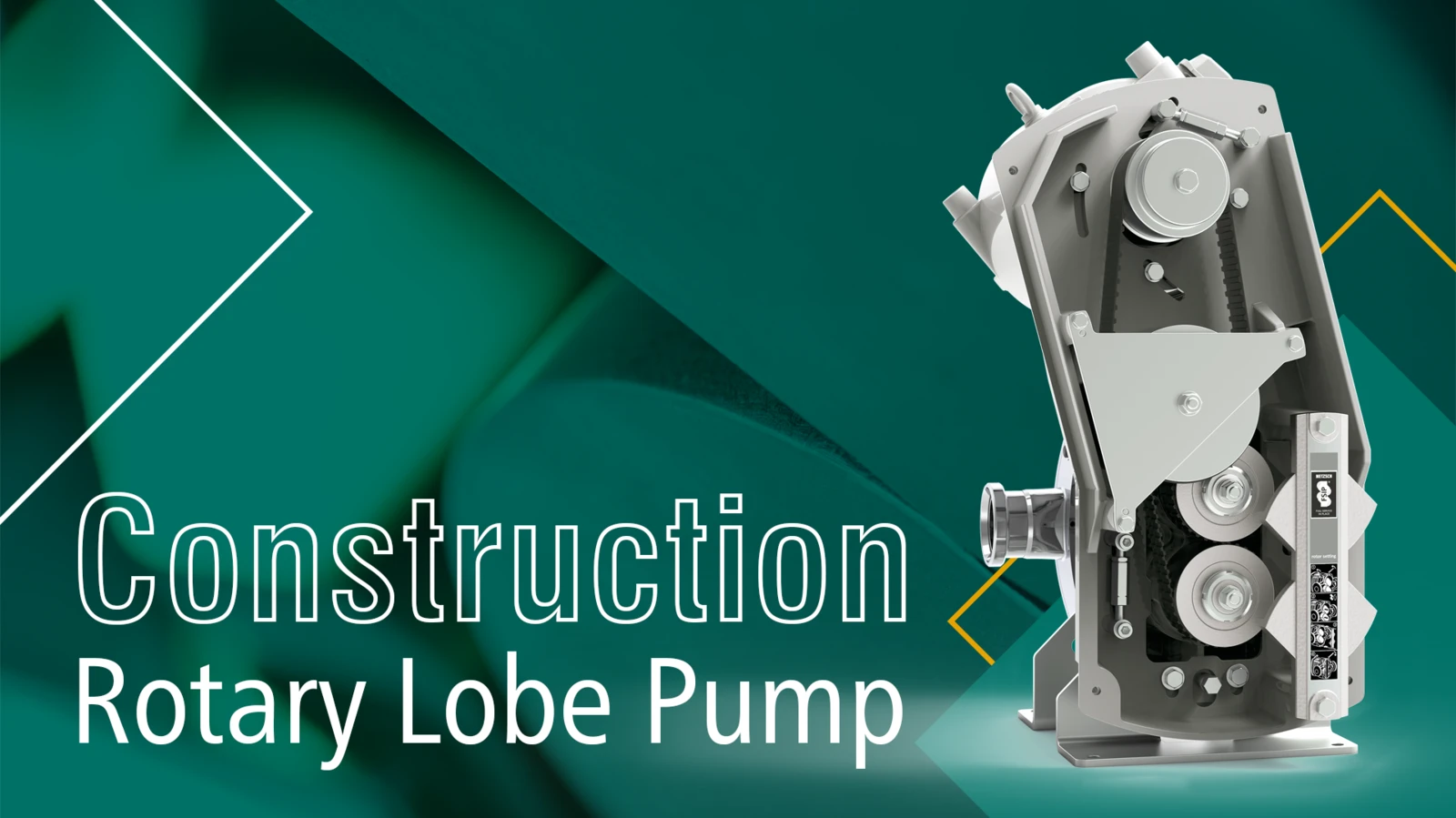
21.08.2023
Construction of a Rotary Lobe Pump
Do you want to know how a rotary lobe pump is constructed and how it works? Thanks to the experts of NETZSCH Pumps & Systems, no questions remain unanswered.
Like all other pumps in the NETZSCH portfolio, rotary lobe pumps also belong to the rotating positive displacement pumps group. They consist of a housing and rotary lobes inside. We will show you how a rotary lobe pump is constructed and how to benefit from it. The most important components at a glance:

Customised Consulting
Construction of a rotary lobe pump: The housing
The housing is a crucial component in constructing a rotary lobe pump. The protective casing surrounds the internal components and ensures safe and efficient operation. The housing is available in various designs, each tailored to specific requirements and applications. The housing can be made of metal alloys, plastics or ceramics. The choice is based on the medium to ensure optimum strength, resistance to chemical substances and abrasion resistance. The form of the housing can also vary. NETZSCH offers housings with rubberised inserts or in all-metal design, depending on the individual application. Compared to conventional rotary lobe pumps with rubber lobes, the housing insert on rotary lobe pumps from NETZSCH reduces adverse effects caused by temperature influences. Optionally, the rotary lobe pumps are also available with replaceable, chemically resistant wear protection plates. With the all-metal design, the interior is also free of dead space. This makes the rotary lobe pump ideal for use in hygienic applications. In this way, you can prevent contamination of the pumped material. For residue-free cleaning of the pump, you can use the proven CIP (Cleaning-In-Place) process and subsequently the SIP (Sterilisation-In-Place) process.
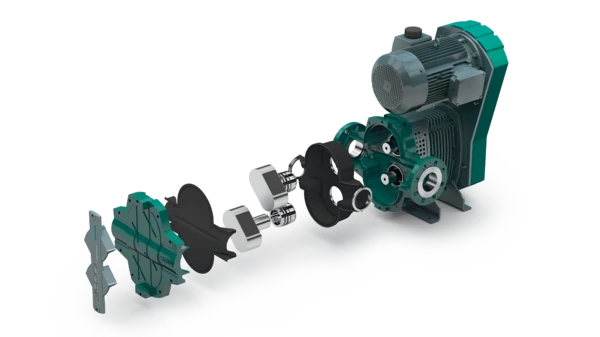
Inlet and outlet openings as part of the construction of the rotary lobe pump
Inlet and outlet openings are crucial elements in the construction of a rotary lobe pump, as they enable and control the flow of liquid. Depending on the application and requirements, different variants of inlet and outlet openings can be used. We offer inlet and outlet openings with different connections, flanges or threaded connections. For hygienic applications, our portfolio also includes variants such as the milk thread (DIN 11851), Tri-Clamp or SMS. The choice of suitable inlet and outlet openings depends on various factors, including the type of liquid to be conveyed, the desired flow rate, the pressure and the spatial conditions. Optimal placement and configuration of the inlet and outlet openings in the rotary lobe pump construction will ensure efficient fluid flow and maximise the performance of the rotary lobe pump in your particular application.
Construction of a rotary lobe pump: The rotary lobes
Two-, three- or four-bladed, straight or spiral rotary lobes? The rotary lobes are an essential component in the construction of the rotary lobe pump, and the spectrum of different variants and designs is large. Two to six space fillings are displaced per rotation, depending on the number of rotor blades. The material and design of the rotary lobes are matched to the unique requirements of the medium. Rotary lobes with suitable geometry are also available for viscous, abrasive and solids-containing media. Adapted to the medium, the materials increase the resistance of the rotary lobes and extend their service life. In addition to metal-rubber rotary lobes, NETZSCH also offers all-metal rotary lobes. Due to the geometry, each rotor can be installed and removed independently in both the all-metal and metal-elastomer versions. The rotary lobes can be changed in just a few steps because the lobes are not screwed to the shaft but fixed with easily accessible clamping elements. Moreover, no axial adjustment work is required on the rotary lobes. Maintenance is also possible without dismantling, thanks to the FSIP® concept. With the help of the adjustment gauge mounted in front of the pump cover, you can easily position the rotary lobes after service without expensive special tools. This saves you time and, therefore, money.
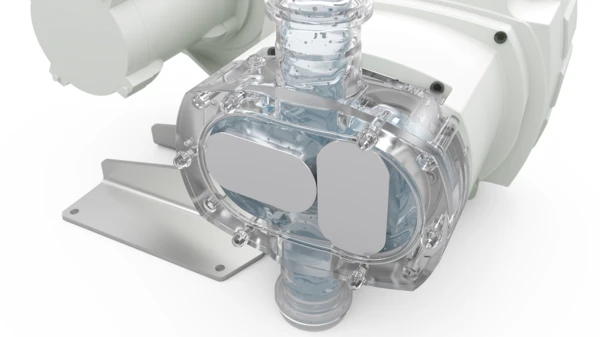
Seals as part of the construction of a rotary lobe pump
Another component in the construction of the rotary lobe pump are the seals. They ensure a reliable and sealed working chamber. Furthermore, they prevent the leakage of liquids and enable efficient operation. Different types of seals can be used depending on the application and requirements. These include, among others, static seals, dynamic seals, gap-free seals and double-acting seals. Static seals are placed between the casing walls and the fixed parts of the pump. These are usually O-rings or flat seals placed in grooves or specially designed seating surfaces. Static seals are used in areas where there are no moving parts. Dynamic seals are used between the rotating or moving parts of the rotary lobe pump and the housing. They are used where lobes or shafts are moving, and sealing against the casing wall is required. Examples of dynamic seals are shaft seals, mechanical seals or labyrinth seals. On the other hand, gapless seals are often used in high-pressure applications to prevent fluid leakage. They are made of Teflon or metallic materials and provide a high degree of sealing without gaps. Double-acting seals are used in pumps capable of pumping in both directions. They consist of two seals that seal both the inlet and outlet, effectively controlling fluid flow. The selection of the appropriate seals depends on factors such as the type of liquid being pumped, the pressure, the temperature and the specific application requirements. High-quality seals will ensure you have a reliable seal, minimise leakage and contribute to the efficiency and longevity of the rotary lobe pump.
Construction of a rotary lobe pump: The drive
NETZSCH offers you two different versions of drives. One variant with synchronised gear and one with belt drive. The worldwide unique GSS technology (gearbox security system) prevents both the entry of the medium into the synchronous gear and the penetration of the gear oil into the pump chamber. In this way, and through the resistance to dry running, you prevent possible operational stops and the associated downtime costs. Maximum operational reliability is thus always guaranteed when a TORNADO® is used. The belt drive, on the other hand, replaces the synchronous gear and functions completely oil-free. It also ensures the smoothest possible running of the pump unit. This results in fewer vibrations and less stress on all components. This significantly increases the service life of your rotary lobe pump.
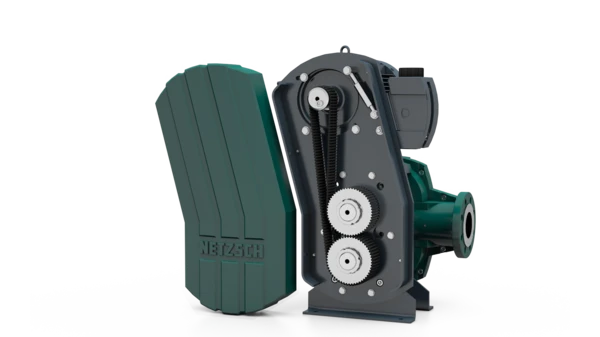
Portfolio of rotary lobe pumps from NETZSCH
Compact, robust, powerful: These are precisely the characteristics of the TORNADO® rotary lobe pumps from NETZSCH. However, selecting the right pump for the individual application is crucial. The experts at NETZSCH have six different models to choose from:
In addition to rotary lobe pumps, NETZSCH, a global specialist for pumping complex media, offers numerous other technologies. These include NEMO® progressing cavity pumps, NOTOS® multi screw pumps, PERIPRO® peristaltic pumps and grinding systems. Together with you, we will find the right one for your application.
